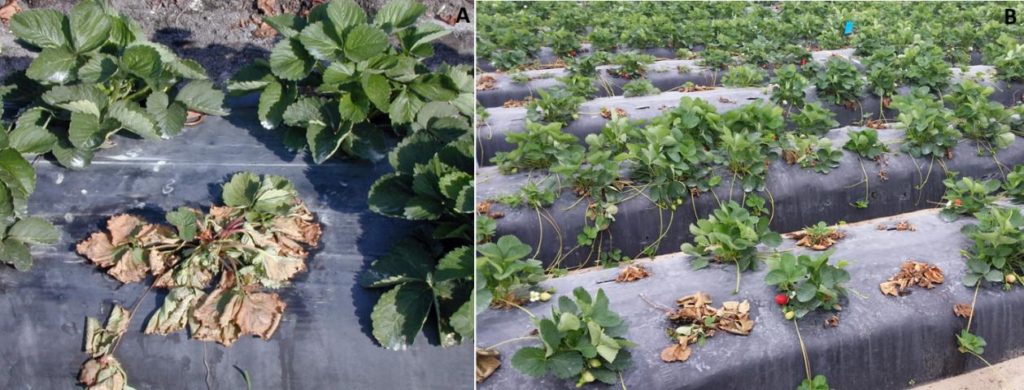By Clint Thompson
Florida’s strawberry producers have more than just Neopestalotiopsis Fruit Rot to worry about from a disease management standpoint.
Natalia Peres, professor of plant pathology at the University of Florida/ Gulf Coast Research and Education Center, highlights a couple of additional diseases that growers need to be wary of as production continues this year.

Credit: UF/IFAS
“There’s some Phytophthora out there. We’ve been getting quite a few samples in the clinic that have Phytophthora. It’s the time of the year when plants start collapsing with Phytophthora. That’s one to be on the radar. It’s not as dependent on the weather. If you don’t have rain, plants can still go down with Phytophthora,” Peres said.
Phytophthora impacts the crowns of the strawberry plants. The disease leads to wilting of the plants, which eventually collapse and die.
“Usually when the plants put out a flush of production, like put a lot of energy into production, that’s when you see them going down. That’s happening right now, and why I think we’re getting some of the samples in the clinic,” Peres said.
Click here for management options.
Botrytis Fruit Rot, or gray mold, is another disease of note this season. The fungus affects all aerial parts of the strawberry plant. Its most economical impact, however, happens when flowers and fruit are affected. This can lead to losses greater than 50%. Since it is also a post-harvest disease, infections that originate in the field continue to develop in storage.
“Botrytis, of course, is always out there and something that growers need to be alert about,” Peres said.
Click here for management options.
Neopestalotiopsis causes leaf spots on strawberry plants. It develops quickly and produces spores on the leaves. It can cause severe leaf spotting and fruit rot under favorable weather conditions (wet and windy to spread spores).









